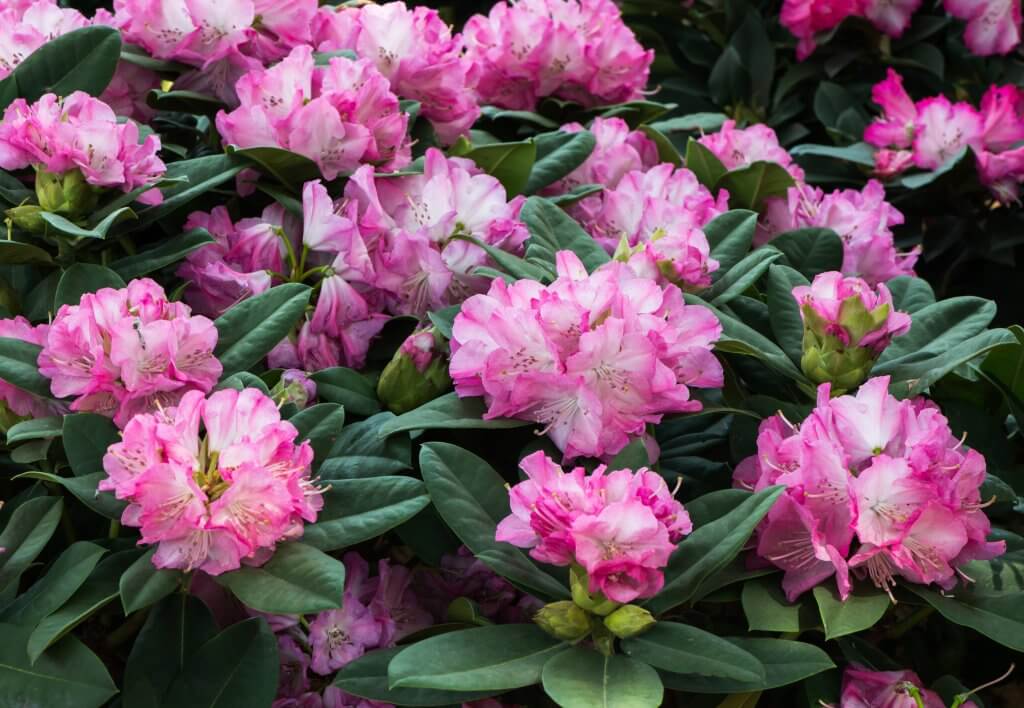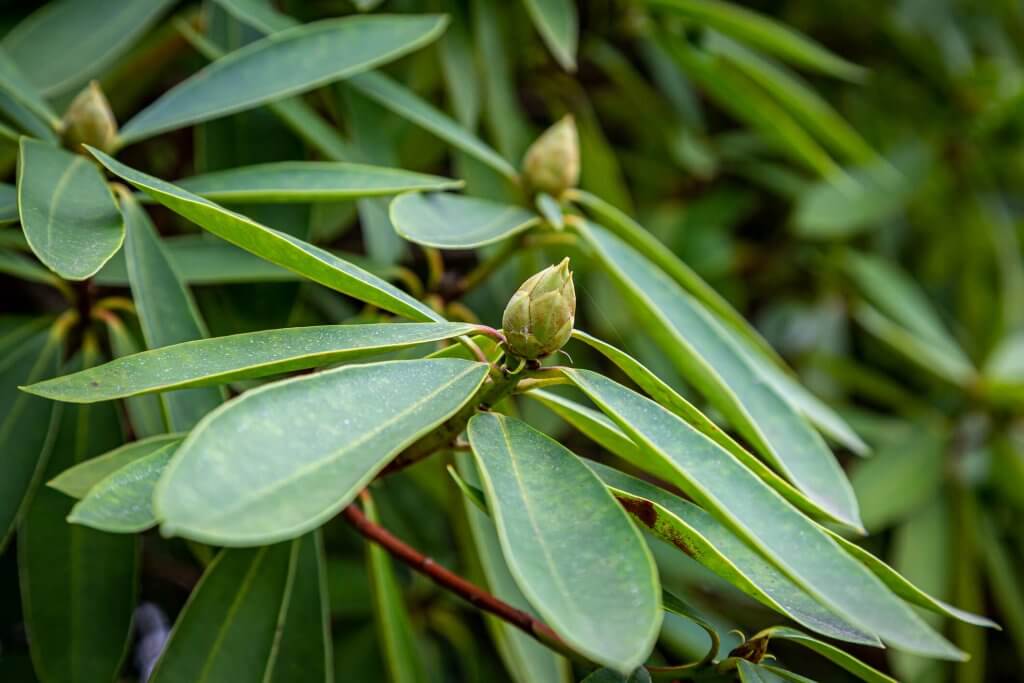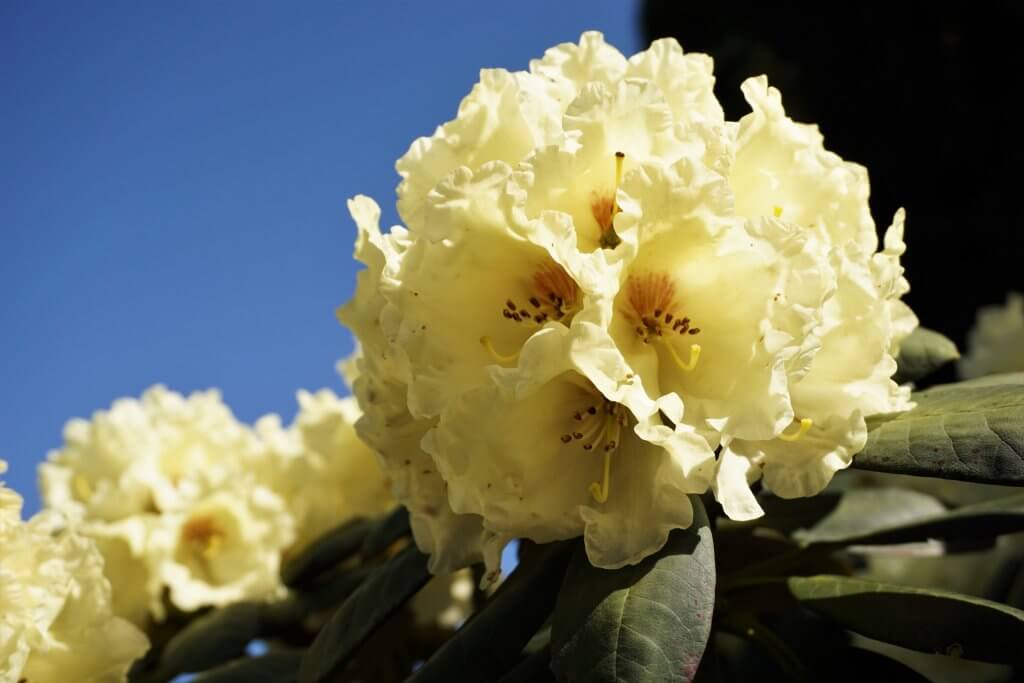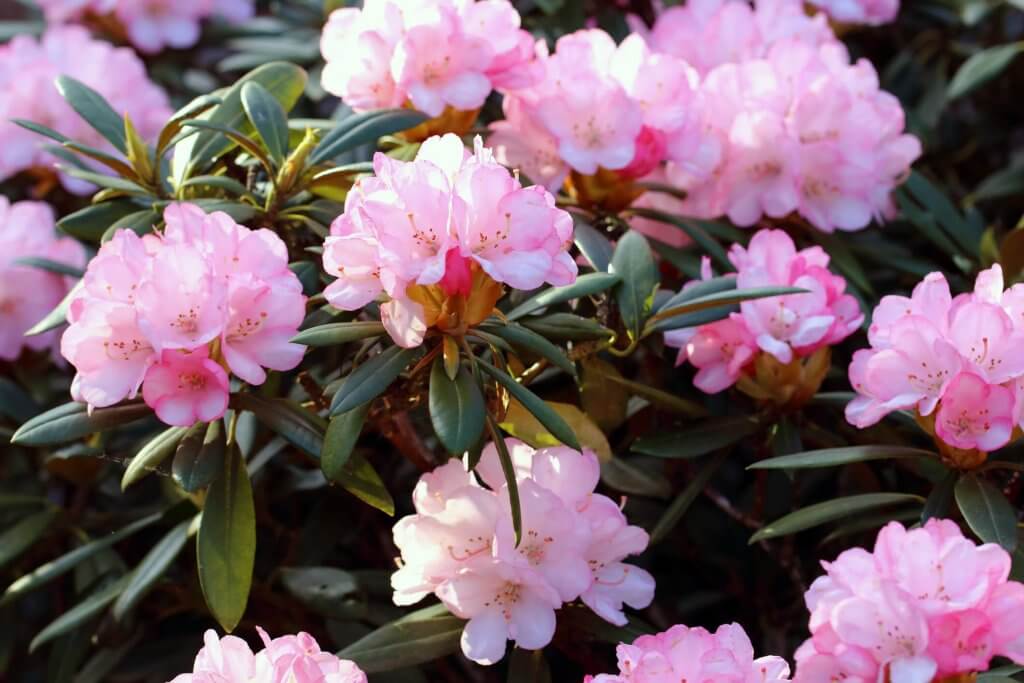Rhododendrons are a very diverse species of flowering garden shrub, and consequently selecting the right Rhododendron is going to matter in terms of planting and caring, for your garden. Regardless of type, rhododendrons have extremely beautiful flowers and brighten up the home garden. Here’s what you need to know about choosing the right Rhododendron for your garden.

Choosing Your Rhododendron
With a broad variety of temperature tolerances and sizes, choosing your Rhododendron is going to come down to multiple factors. Consider how cold hardy you need your Rhododendron to be, the size of your garden, and the flowers and appearance that you desire.
- The Mighty Rhododendron. So named for its strength and character, the Mighty Rhododendron is able to survive throughout most winters and will blossom the following Spring. This species of Rhododendron has large, full flowers.
- The Elviira. With big, red flowers, the Elviira is perfect for shaded gardens. It is hardy and prefers colder climates, and may wilt and suffer in warmer climates or even partial sun.
- The Blue Peter. If you want delicate, lavender flowers, in the form of a small shrub, the Blue Peter is a great choice. Growing only four feet tall, the Blue Peter can fit into any garden, provided it gets enough sun.
- The Bow Bells. With unique, bell-shaped pink blossoms, the Bow Bells Rhododendron is also known for its lovely foliage, which will colour shift throughout the year. This is great for an all year garden.
- The White Angel. The White Angel Rhododendron will bloom from early Spring on, and will grow to about six feet in height. This is a great, large shrub that prefers partial sun or full shade, and has bright white blossoms.
- The Nova Zembla. For a flash of colour, consider this Rhododendron, with its bright red blossoms. This shrub can be used as a hedge and can reach up to eight feet tall, with thick waxy leaves and plentiful blossoms.
As you can see, the colour and shape of blossoms vary dramatically depending on the Rhododendron, as does the size. Make sure you find a Rhododendron that will suit your garden.


Where to Buy
If you are looking to buy Rhododendrons, we suggest you check out our friends at Plants in a Box. Plants in a Box have 5 varieties available that you can order online and they also offer free standard delivery. (Delivery only available to QLD, ACT and NSW)
Do you live in Hobart Tasmania? Check out our preferred local plant supplier Greenhill Nursery. They have a fantastic selection of Rhododendrons available.
Planting Rhododendrons
The best time to plant Rhododendrons is usually Spring. This allows them time to establish themselves before the cooler Winter months. Look for a place where the Rhododendron will get shade, especially around the Winter months. The harsh, winter sun can damage Rhododendrons or encourage them to start growing before it’s time. If you need to prepare your soil in advance, do so the previous Autumn.
Before you plant your Rhododendrons, make sure to soak them in water. A bare root Rhododendron can be soaked overnight before planting, while a potted Rhododendron should have its soil thoroughly watered beforehand. Rhododendrons thrive on water. For a Rhododendron, dig a hole that is three times as wide as its root ball; Rhododendrons need space. Make sure it’s also a few inches deeper than the root ball, and then backfill with soil. Your soil may need the addition of compost or peat moss if the soil is generally weak.
Water thoroughly after planting your Rhododendron. Consider mulching around the Rhododendron to keep moisture in, but avoid placing mulch around the base of the plant as this could start rot.


Caring for Rhododendrons
Fertilise your Rhododendrons every year in Autumn. Rhododendrons prefer soil that is acidic. Rhododendrons will quickly show if they haven’t gotten enough water. Don’t let your Rhododendrons dry out, as it takes some time for them to recover. You want to make sure the soil stays consistently moist, but that it doesn’t get wet enough to promote rot or fungal growth.
As shallow-rooted plants, Rhododendrons are going to require watering at first, twice per week during their first growing season. After that, they may only need watering once every two or three weeks, if there is no natural rain.
Otherwise, beyond fertilisation and watering, Rhododendrons may undergo some pruning (especially if being used as hedges). They aren’t tolerant of regular pruning, though flower clusters can be removed to promote root growth.
They don’t require a lot of maintenance, but rather, require the right environment. If the Rhododendron is subject to too much sun, it may begin to wilt. Likewise, if it’s subject to extreme cold that it isn’t hardy to, it may die off come Winter.


Common Problems With Rhododendrons
If placed in the right location, Rhododendrons usually don’t encounter a lot of difficulties. But because they are shallow-rooted plants, and do require a lot of water, they may take some time to maintain. Here are some of the most common issues that you may experience.
- Curling or twisting leaves. This generally indicates that the rhododendron is going to need to be watered soon. Don’t let the plant get to the point where its leaves begin to wilt, because it’s hard for the plant to recover from dehydration. When leaves begin to twist, it’s already time to water. Rhododendrons are shallow-rooted, so the moisture levels of the topsoil will give you a good indication of how dry the plant is.
- Pale or light green leaves. This can happen if the soil doesn’t have enough iron. Amending the soil with iron fertilizer and sulfur can help.
- Wilting leaves. Sometimes wilting leaves is an indicator that it is dry, but other times it can be something known as fungal dieback. Take a look at leaves and blossoms for evidence of fungal infection; if you can see fungus growing on the leaves, cut back the affected leaves and treat with a natural fungicide.
Take some time to find the right Rhododendron plant for your garden and the right place for it. Since they do best in partial sunlight, and moist soil, you may need to alter the environment before planting. Rhododendrons will flourish in the right environment with minimal care, but they are going to require some care (in the form of twice-weekly watering) during their first growing season. After they establish themselves, they can be quite a low maintenance plant.
[elementor-template id=”4604″]
[elementor-template id=”6387″]
